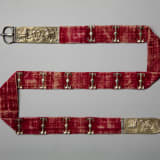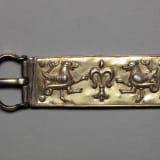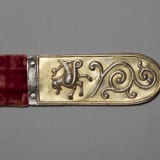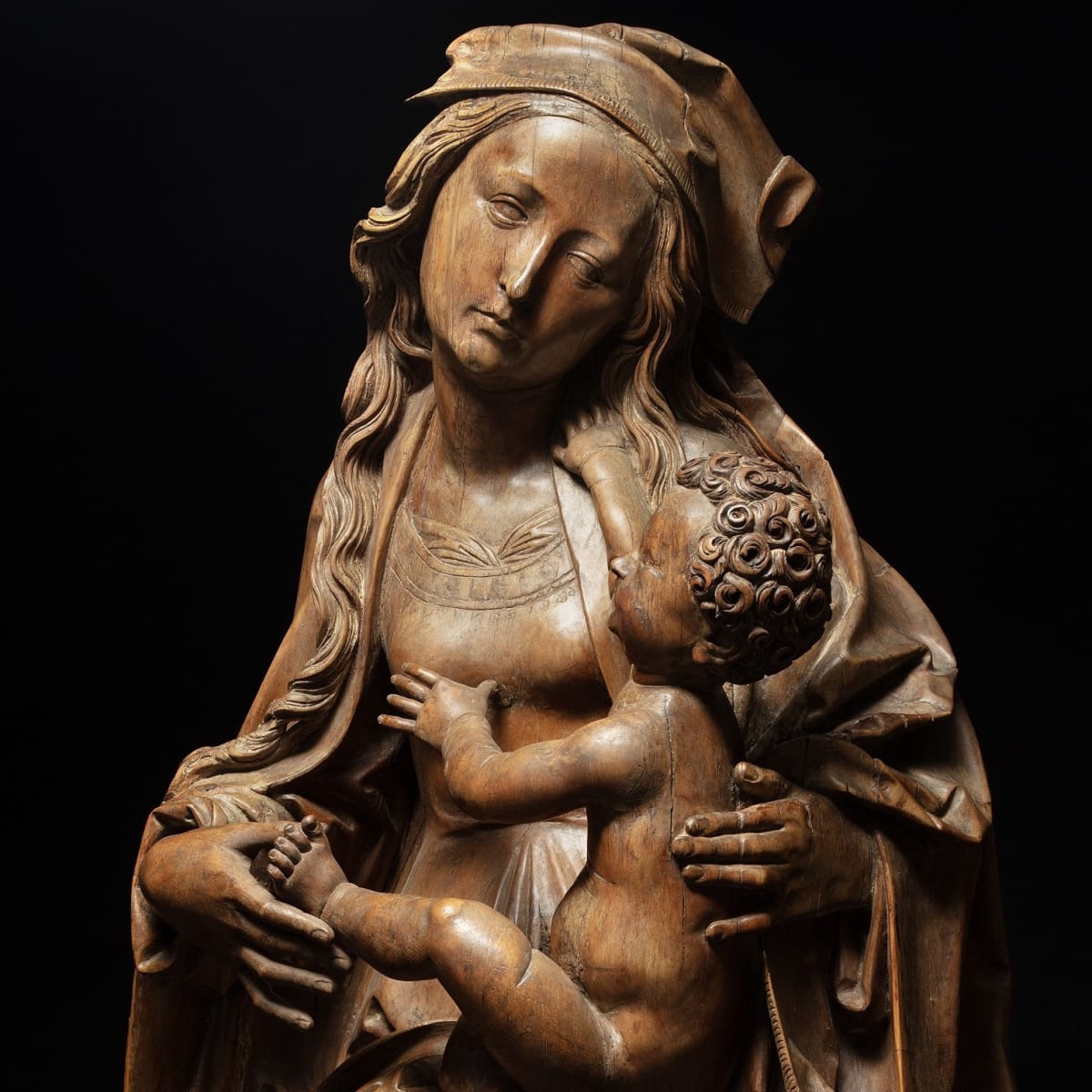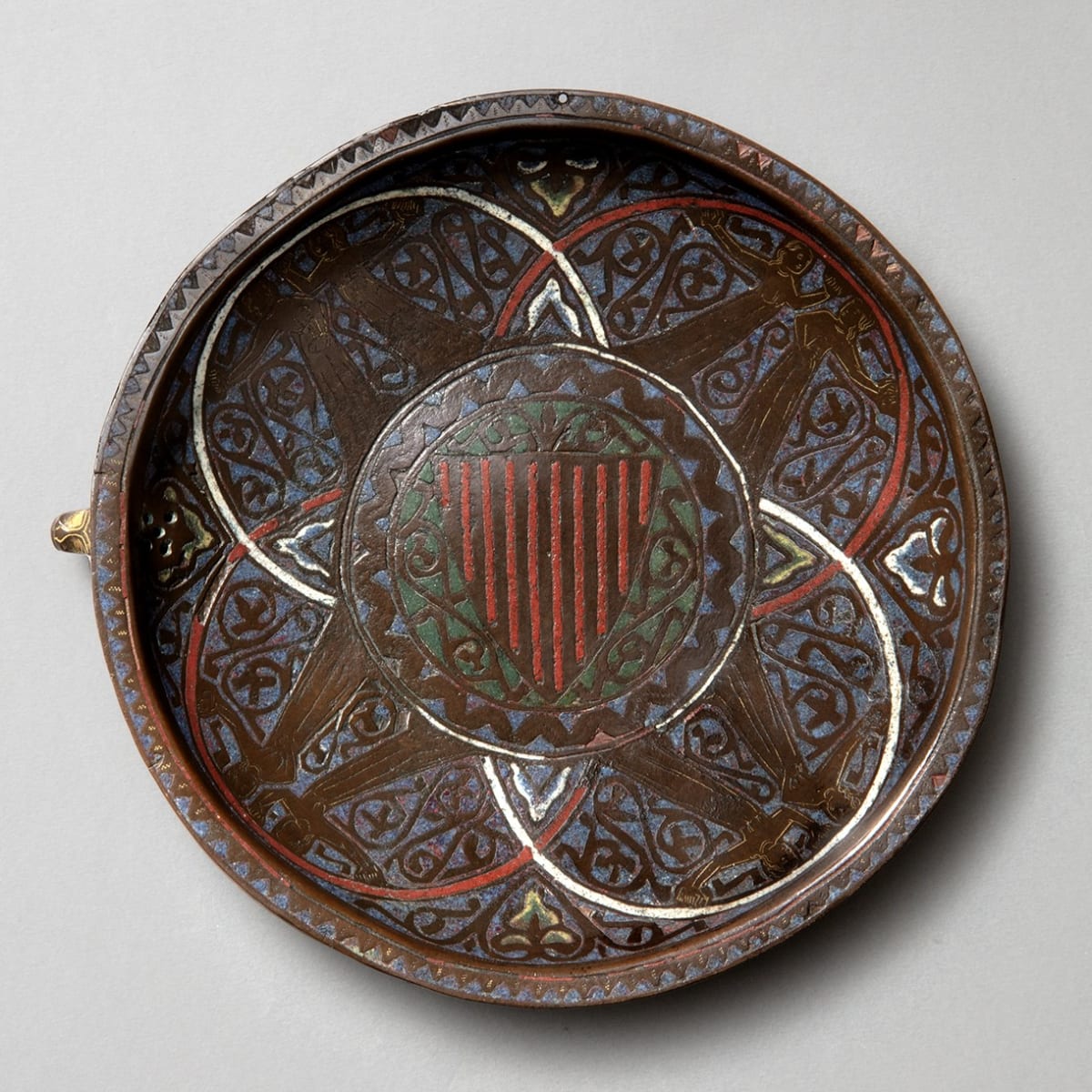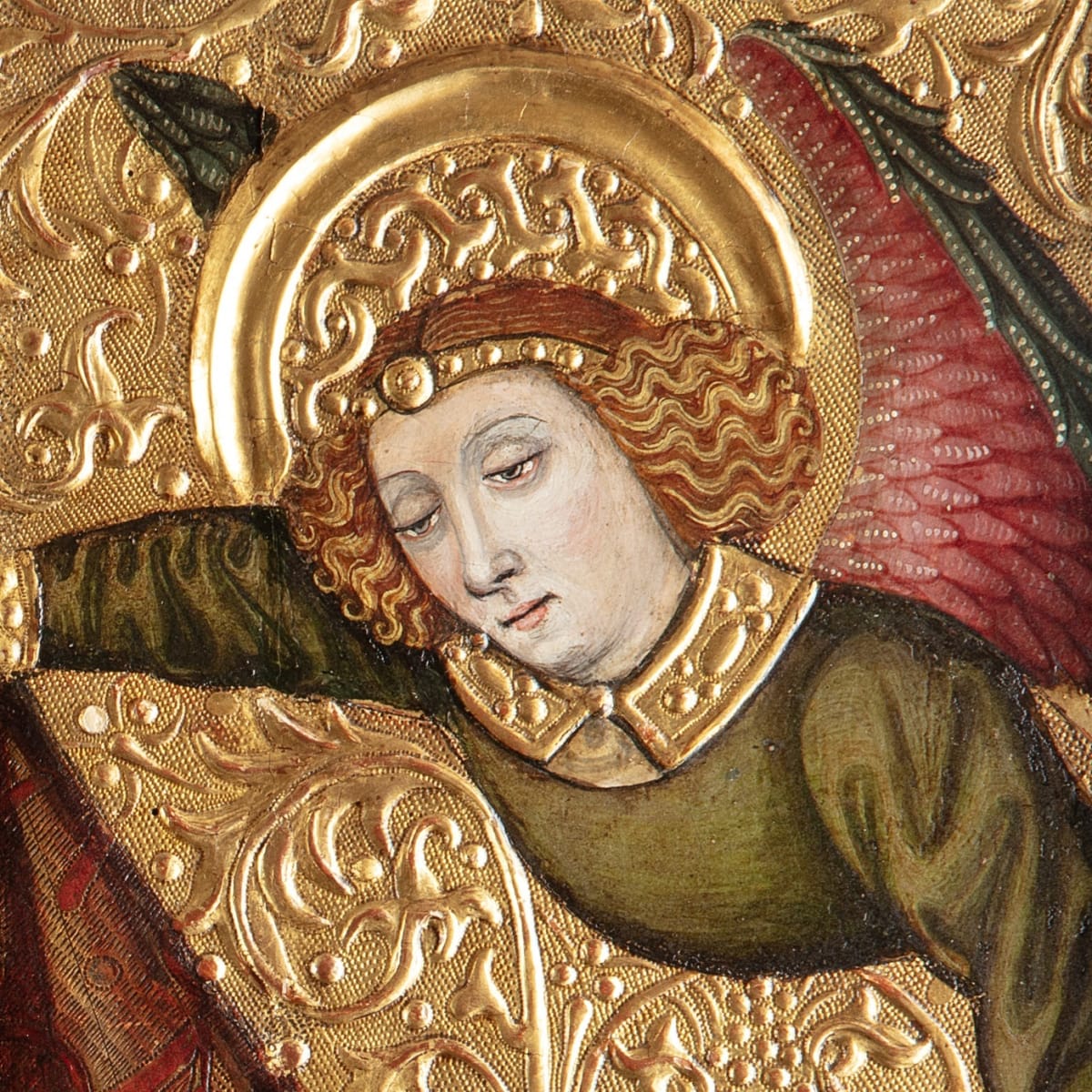



A silver-gilt girdle decorated with fantastical beasts
c. 1350-1400
Serbian Empire
gilt silver
4.3 x 126 cm
Belts and girdles were both necessary components in late-medieval dress, and visually-splendid, materially-rich showpieces popular among a pan-European courtly elite. The kind of secular and fantastical imagery decorating this example, with its decoration of strutting griffons and fleur-de-lys adornments (features typical of precious silver plate produced in the Serbian Empire during the 1300s), became popular from the thirteenth century onwards. They potently underscore the extraordinary refinement achieved by the period's skilled court goldsmiths, standing as objects of the greatest luxury and beauty. Worn around the waist by both men and women, and typically over a long-sleeved garment called a houppelande, they were often so long and elaborate that the pendant end hung down the front of the garment and caught the eye as its wearer moved.
